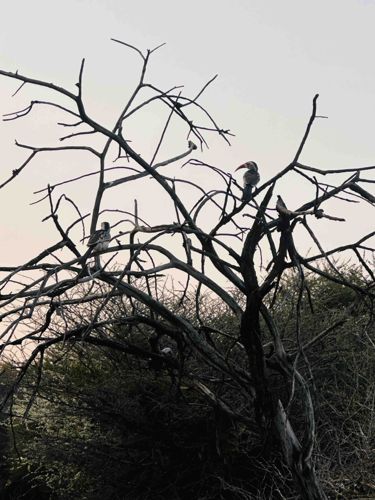Von der Decken's Hornbill
Classification: Class: Aves; Order: Bucerotiformes; Family: Bucerotidae; Genus: Tockus; Species: T. deckeni

Brief Description
Von der Decken's Hornbill is a medium-sized hornbill known for its distinctive large bill, with males having a bicolored bill (red and ivory/creamy white) and females having an all-black bill. They forage in trees and on the ground, often in pairs or small family groups.
Additional Information
- Region of Origin: East Africa, particularly in countries like Kenya, Tanzania, Ethiopia, and Somalia.
- Typical Sighting Period: Year-round in their native range, though breeding season sightings might be more frequent as they become more active around nests.
- Plumage Details: Males typically have black body plumage, white underparts, white cheeks, and a distinctive bicolored bill that is red at the base and creamy white on the distal half. Females are similar but have an all-black bill and tend to be slightly smaller.
- Ecological Significance: As frugivores and insectivores, Von der Decken's Hornbills play a role in seed dispersal and insect control within their ecosystems. Their presence can indicate a healthy woodland or savanna environment.
- Conservation Status: Least Concern (LC) by IUCN
- Observation Tips: Look for them in dry woodlands, savannas, and bushlands, often perched prominently on trees. They can be seen foraging on the ground for insects or climbing in trees for fruit. Listen for their distinctive calls, which can help in locating them. Patience is key, as they can sometimes be shy.